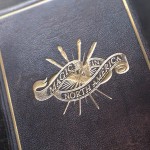History of Magic in North America, Lesson Four: 1920s Wizarding America

Mar 11, 2016
News, Pottermore
This morning, Pottermore published the final of J.K. Rowling’s four pieces about the history of magic in North America. If you haven’t read it yet, you can do so here.
While the previous three posts focused on more specific time periods and events leading up to the 1920s, the final post highlights several significant cultural aspects of the wizarding community in 1920s America. This final post also ends on a more lighthearted note and contains some interesting tidbits, whereas the previous three posts dealt with some heavier material. Today, we learned about the four American wandmakers, who use body and core materials that are unique and different from their British counterparts:
Legislation introduced at the end of the nineteenth century meant that every member of the magical community in America was required to carry a ‘wand permit’, a measure that was intended to keep tabs on all magical activity and identify the perpetrators by their wands. Unlike Britain, where Ollivanders was considered unbeatable, the continent of North America was served by four great wandmakers.
Shikoba Wolfe, who was of Chocktaw descent, was primarily famous for intricately carved wands containing Thunderbird tail feathers (the Thunderbird is a magical American bird closely related to the phoenix). Wolfe wands were generally held to be extremely powerful, though difficult to master. They were particularly prized by Transfigurers.
Johannes Jonker, a Muggle-born wizard whose No-Maj father was an accomplished cabinet maker, turned himself into an accomplished wandmaker. His wands were highly sought after and instantly recognisable, as they were usually inlaid with mother-of-pearl. After experimenting with many cores, Jonker’s preferred magical material was hair of the Wampus cat.
Thiago Quintana caused ripples through the magical world when his sleek and usually lengthy wands began entering the market, each encasing a single translucent spine from the back of the White River Monsters of Arkansas and producing spells of force and elegance. Fears about over-fishing of the monsters were assuaged when it was proven that Quintana alone knew the secret of luring them, a secret he guarded jealously until his death, at which point wands containing White River Monster spines ceased production.
Violetta Beauvais, the famous wandmaker of New Orleans, refused for many years to divulge the secret core of her wands, which were always made of swamp mayhaw wood. Eventually it was discovered that they contained hair of the rougarou, the dangerous dog-headed monster that prowled Louisiana swamps. It was often said of Beauvais wands that they took to Dark magic like vampires to blood, yet many an American wizarding hero of the 1920s went into battle armed only with a Beauvais wand, and President Picquery herself was known to possess one.
As this is the culture Newt will find himself in, we get our first inside look into the world of the first Fantastic Beasts and Where to Find Them film. We learn more about President Seraphima Picquery. We learn about her wand, and a little of her presidency. It certainly paints more of a picture of the environment Newt will be entering, and with the chaos he causes he causes admits strict security, it may be a hostile one Click here to read the full piece.


